Here’s How To Grow Amazing Agave As Houseplants (Or Even Outdoors For Xeriscaping)
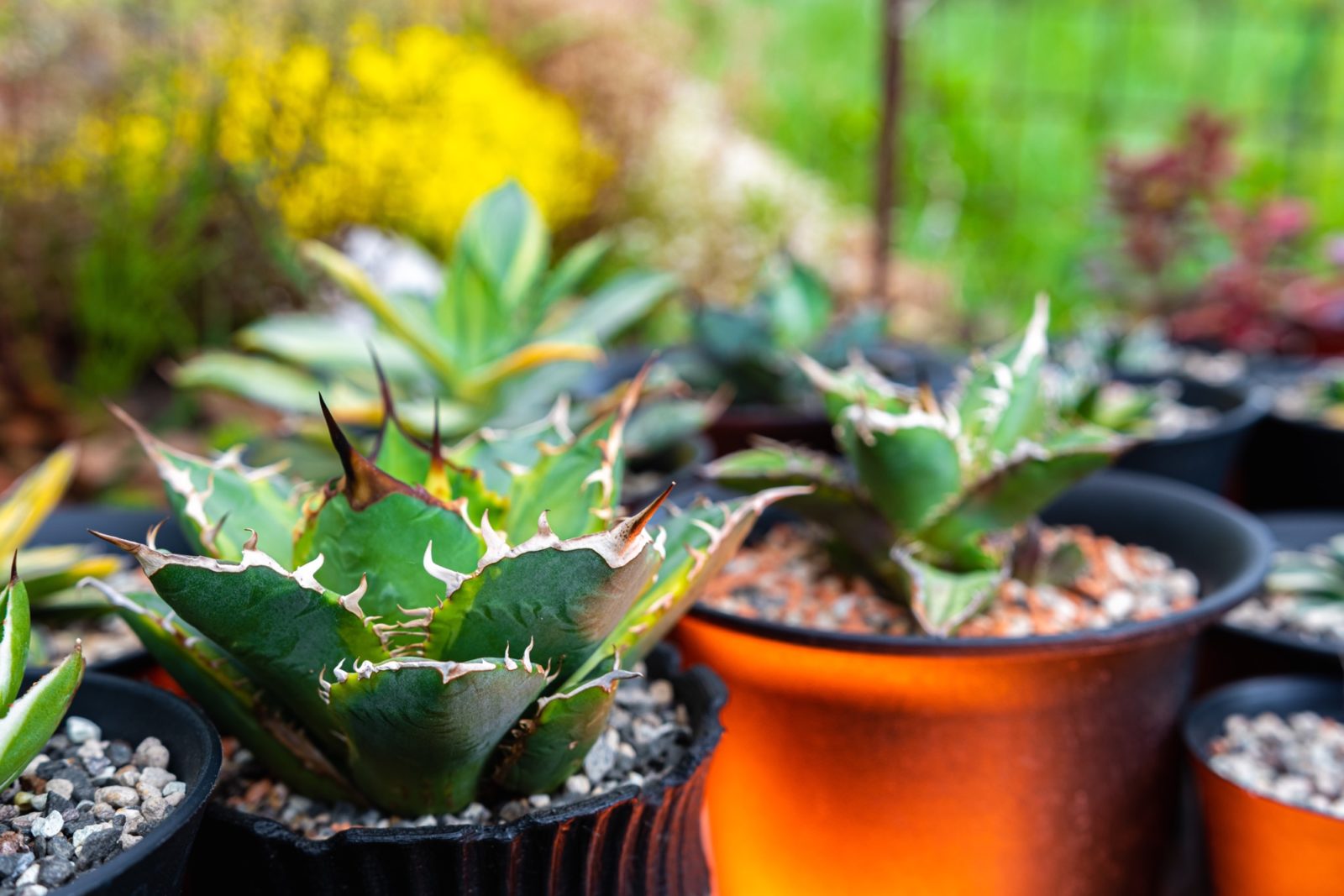
SUCCULENTS > AGAVE

Elizabeth is a Permaculture Garden Designer, Sustainability Consultant and Professional Writer, working as an advocate for positive change. She graduated from the University of St. Andrews with an MA in English and Philosophy and obtained a Diploma in Applied Permaculture Design from the Permaculture Association.
Reviewed By COLIN SKELLY

Colin is a Horticulturist and Horticultural Consultant with experience in a range of practical and managerial roles across heritage, commercial and public horticulture. He holds the Royal Horticultural Society’s Master of Horticulture award and has a particular interest in horticultural ecology and naturalistic planting for habitat and climate resilience.
IN THIS GUIDE
AGAVE GUIDES
Agave succulents can be interesting houseplants and, though they are frost-tender, can be used in summer bedding schemes or in large containers outdoors over the summer months.
If you are looking for a statement plant for a conservatory or other bright indoor locations, for a greenhouse, or for a summer bedding scheme or container garden, then Agave could be a good plant to consider.
These interesting succulents make a dramatic show with their large rosettes of fleshy leaves.
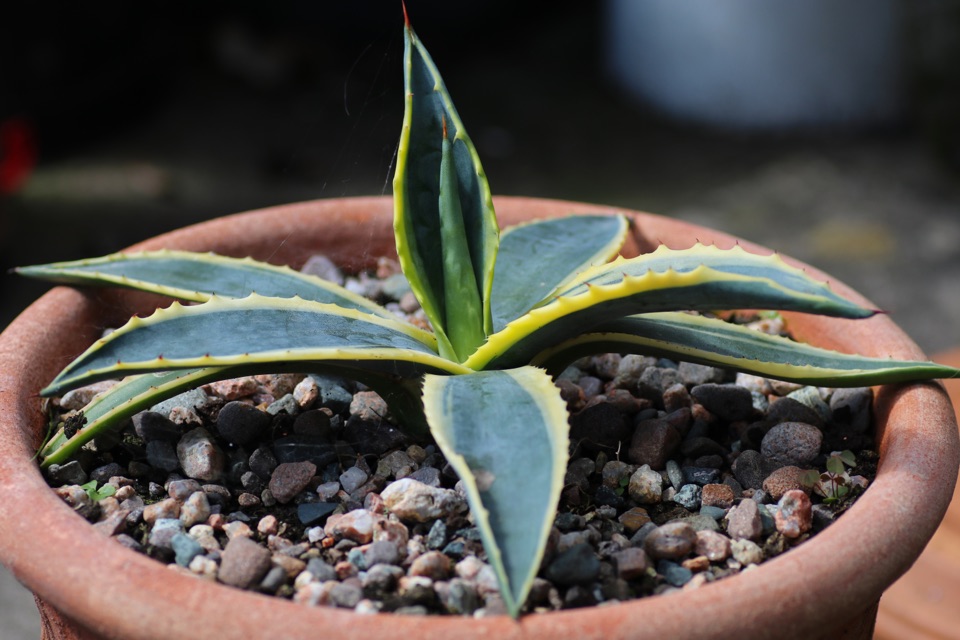
They may be used outdoors for xeriscaping (dry-climate planting) in more arid parts in the south of the UK.
However, they are more commonly grown as houseplants, or as container plants which are placed outside only during the summer months.
Overview
| Botanical Name | Agave |
| Common Name(s) | Century Plant |
| Plant Type | Succulent / Perennial |
| Native Area | North & South America |
| Hardiness Rating | H2 |
| Foliage | Evergreen |
| Flowers | Yellow and green |
| When To Plant | Spring and Summer |
Sunlight
Preferred
Full Sun
Exposure
Sheltered
Size
Height
0.15 – 1.5M
Spread
0.15 – 1.5M
Bloom Time
Summer
Soil
Preferred
Sand or Loam
Moisture
Well-drained
pH
Acidic or Neutral
Agave is a genus of monocot plants mostly native to arid and hot regions of North and South America.1Schoellhorn, R., & Richardson, A. (n.d.). Warm Climate Production Guidelines For Agave. University of Florida. Retrieved March 9, 2023, from https://hort.ifas.ufl.edu/floriculture/pdfs/crop_production/Agave_ENHFL04-007.pdf
Along with the related yucca plant, Agaves are popular ornamental plants outdoors in hot, dry climates and are popular houseplants or summer outdoor plants in temperate zones.
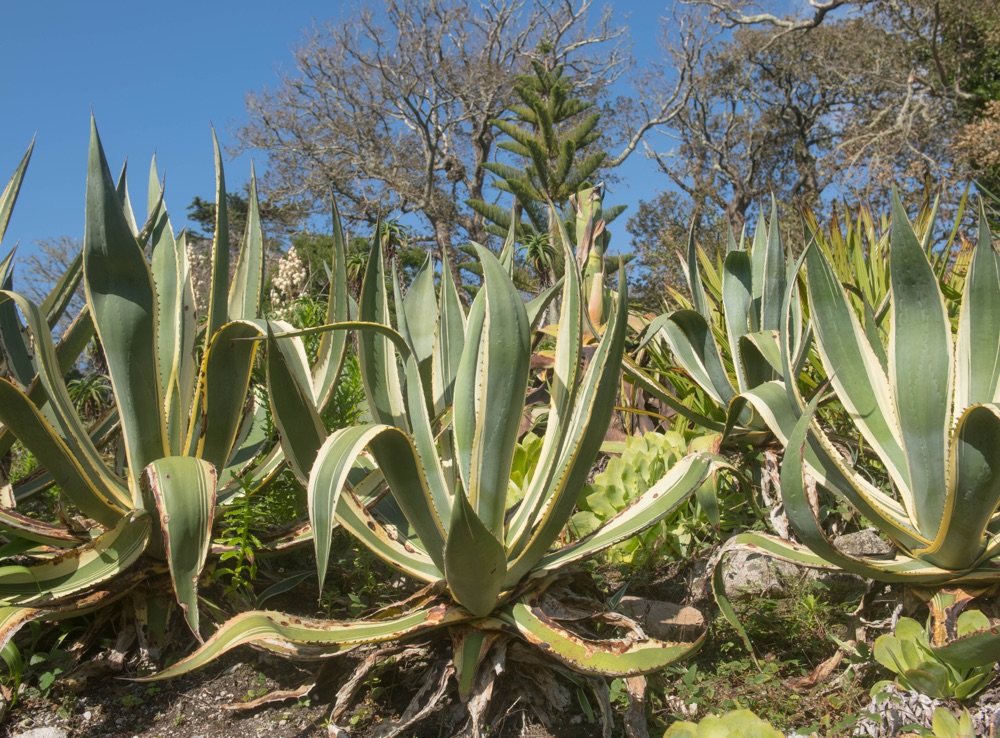
Agaves grow very slowly and are often also referred to by the name ‘century plants’.
Agaves are succulents, storing water in their large, fleshy leaves, which typically form in large rosettes of sharp-edged, rigid foliage.
Funnel-shaped flowers can form in racemes or panicles which often grow much taller than the rosettes of succulent leaves.
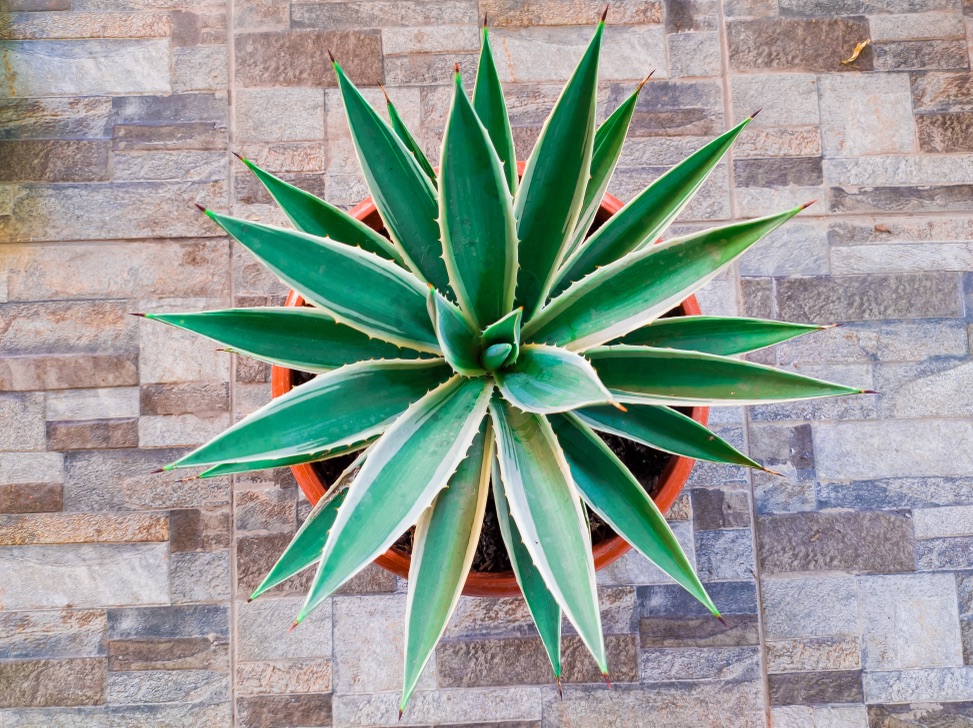
“These types of plants, where seed is set once followed by death, are known as monocarpic,” says Master Horticulturist Colin Skelly.
“For large Agave, such as A. americana, a mature plant can produce a flower stem up to 8m in length – a spectacular way to end its life cycle.
“The yellow-green flowers are hugely attractive to pollinators (you’ll be able to hear them but not see them unless you have a long ladder).
“But be warned – from bitter experience – the remains of large Agaves are not easy to remove!”
Most often, Agaves have leaves which are a greyish-green, sometimes with creamy white or yellow margins.
Why Grow Agave?
While Agave is typically just grown for its interesting architectural form in the UK, in its native ranges this is a plant with many uses.

Commercially, Agaves have long been grown for their fibres (sisal) and are used to make alcoholic drinks, such as tequila.2MasterClass. (2021, March 4). How Is Tequila Made? The 6 Steps of Making Tequila. Retrieved March 9, 2023, from https://www.masterclass.com/articles/how-is-tequila-made
Agave americana also has edible uses, as the heart of the plant is very rich in saccharine and can be eaten when baked.3Agave americana. (n.d.). Plants for a Future. Retrieved March 9, 2023, from https://pfaf.org/user/Plant.aspx?LatinName=Agave+americana
However, since harvesting the heart of the plant will kill it, this is not something that home growers will usually want to consider.
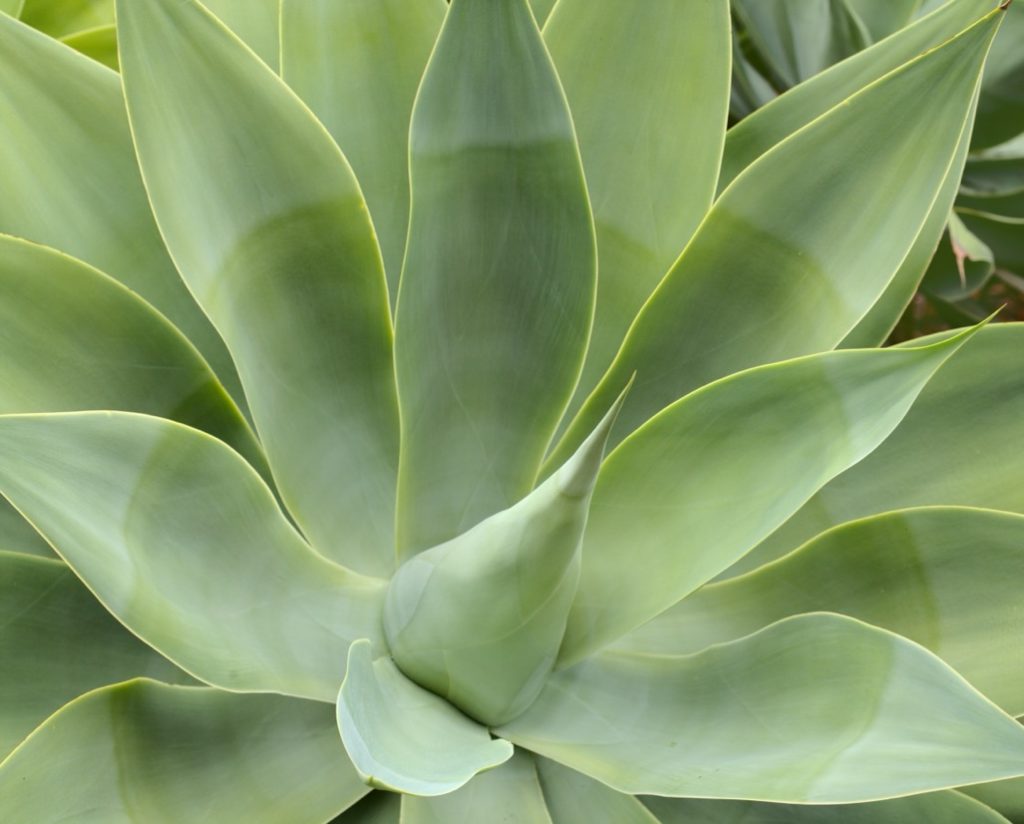
Experimental gardeners may though be interested in tapping the plant for sap, which is used as a syrup or fermented to make alcoholic drinks.4Panchal, B. (2023, March 9). Why Agave Syrup is A Great Vegan Substitute For Honey. Holland & Barrett. Retrieved March 9, 2023, from https://www.hollandandbarrett.com/the-health-hub/food-drink/food/honey/agave-syrup-vegan-substitute-for-honey/
One thing to note if you plan on growing Agave is that the very sharp leaves can easily cut the unwary, and they should be carefully sited.
Common Varieties
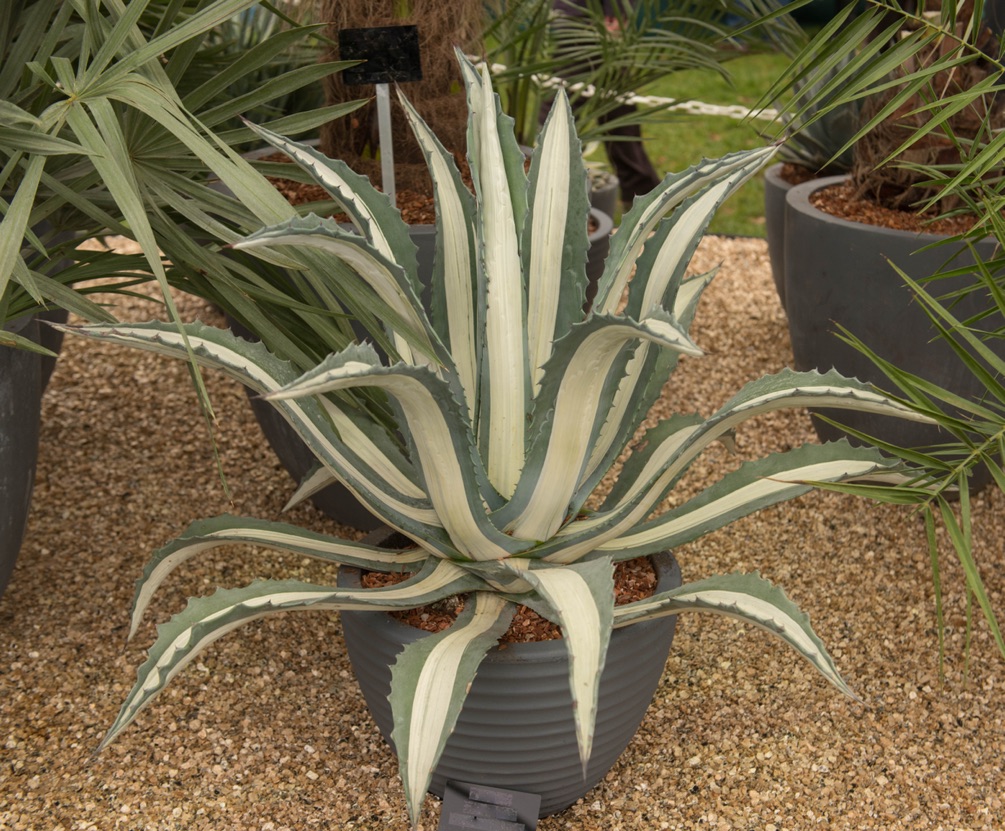
Typical varieties of Agave grown in the UK include:
- A. americana
- A. americana ‘Mediopicta’
- A. americana ‘Mediopicta Alba’
- A. americana ‘Variegata’
- A. attenuata
- A. filifera
- A. macroacantha
- A. montana
- A. obscura
- A. ovatifolia
- A. parrasana
- A. parryi
- A. parviflora
- A. potatorum
- A. salmiana var. ferox
- A. stricta
- A. titanota
- A. utahensis
- A. univittata
- A. victoriae-reginae
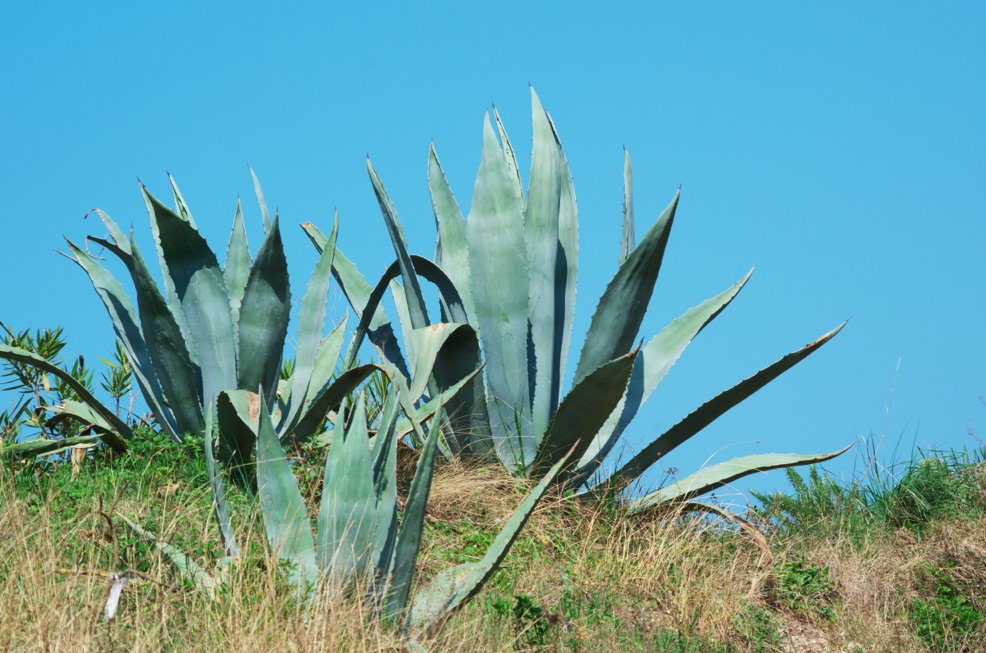
These varieties have different forms and appearances, but all like broadly similar conditions to each other, and to other similar succulents that you might grow in your home or garden.
Where To Grow Agave
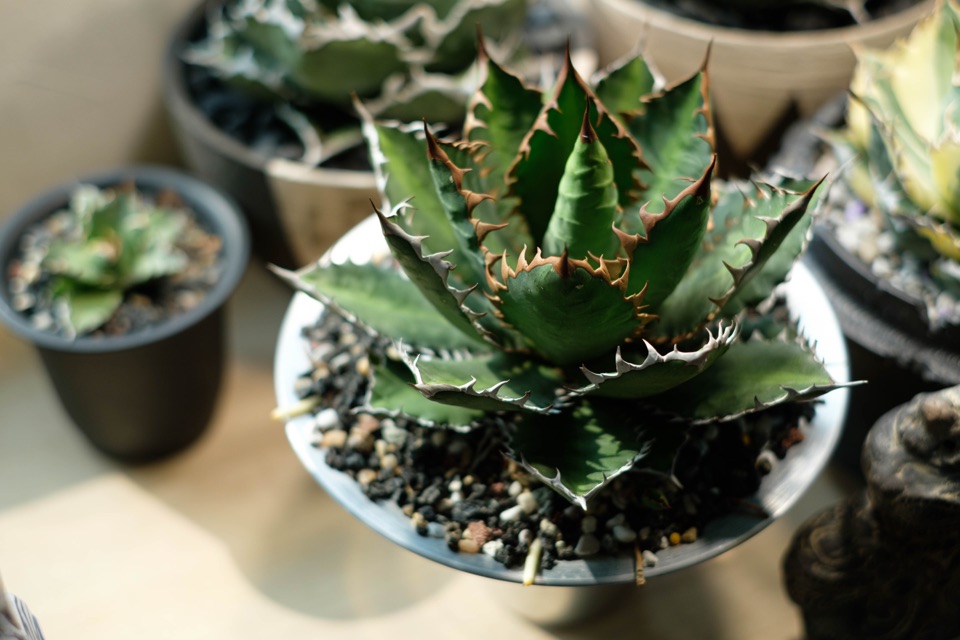
Agave plants all require warm to hot, sunny conditions and very free-draining soil.
When grown in the ground over the summer months good drainage will be paramount, and the soil surrounding the plants should not be overly fertile, and should never be permanently moist.
An acidic or neutral soil or growing medium is best.
A. americana and A. parryi are the only two of these which can be hardy in extremely warm and sheltered gardens or in southern parts of the UK, however, these are still usually only H2 hardy and will not survive a freeze.
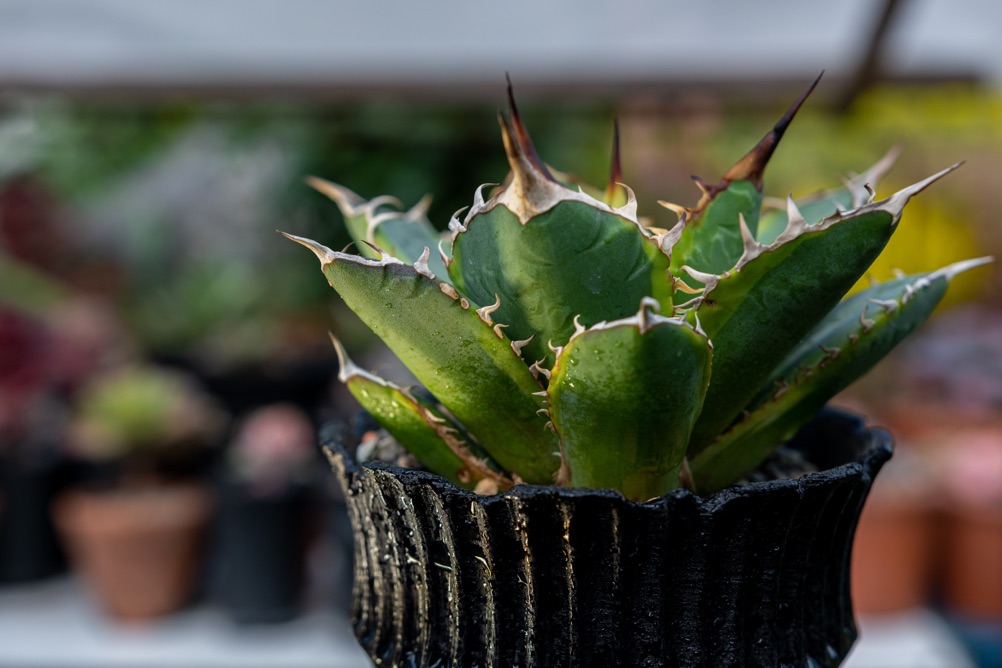
In a few very limited situations it may be possible to grow these outdoors (perhaps with some winter protection) throughout the whole of the year.
Winter wet is usually more of an issue than temperatures in such a situation.
Planting on a mound or bank can help prevent water-logging which can cause plants to rot in winter.
Most Agaves grown in beds and borders, however, should be lifted and moved into a bright and frost-free undercover location or indoors over the winter months.
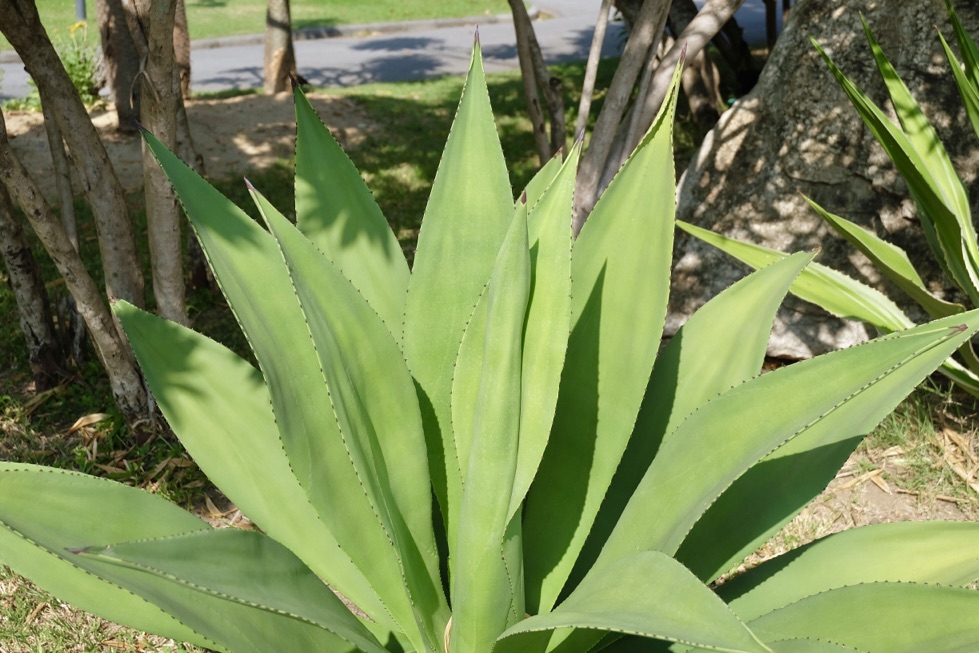
Container plants placed outdoors should also be brought undercover or indoors well before the first frosts.
When growing Agave in a pot, as most people in the UK will do, using a cactus compost or other very free draining potting mix is important.
A typical good-quality potting mix with plenty of grit added for drainage can also work well.
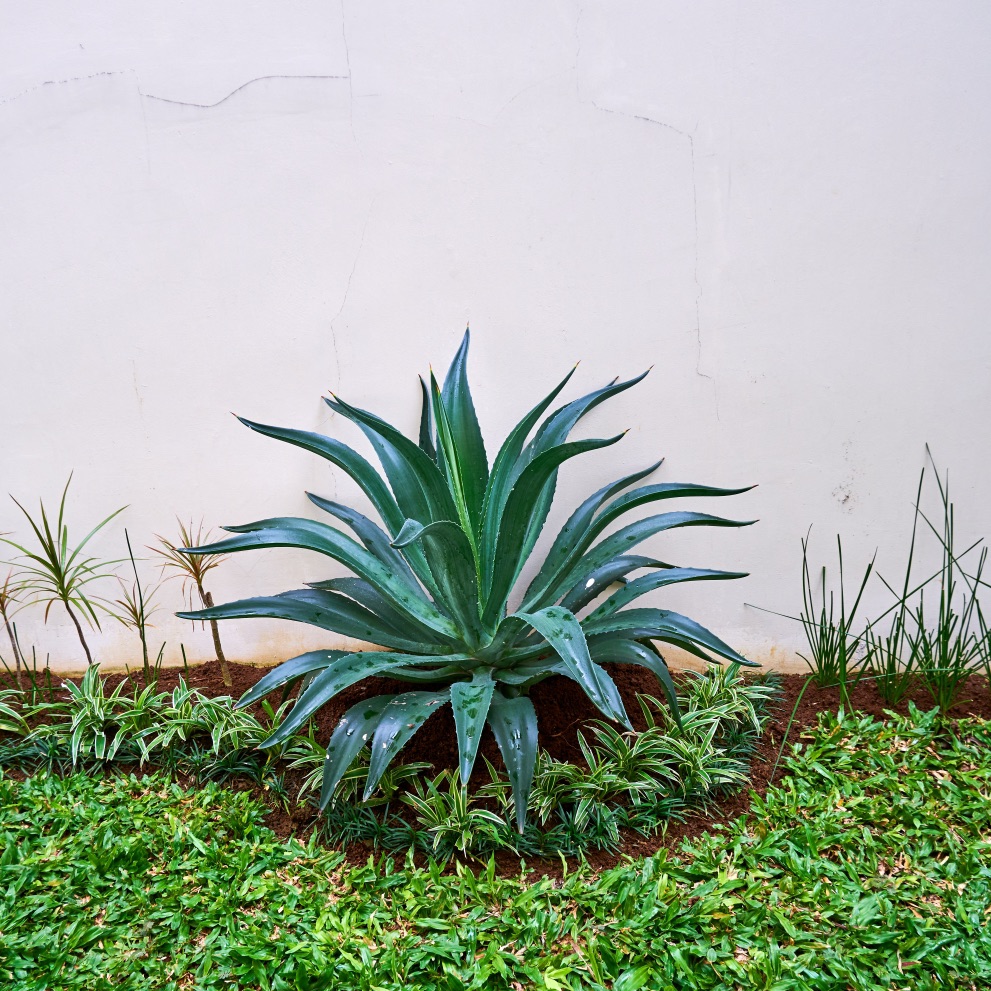
Make sure that you choose a suitable container, which will not retain too much moisture and will allow water to drain very freely through the holes at the base.
The containers can often be placed outdoors in summer, but can also be grown indoors as houseplants throughout the year.
Growing under glass is usually best for most Agave in the UK, but remember that Agave succulents should be placed in as light and bright a position as possible, as they enjoy having plenty of light (as much light as possible!) throughout the year.
Planting
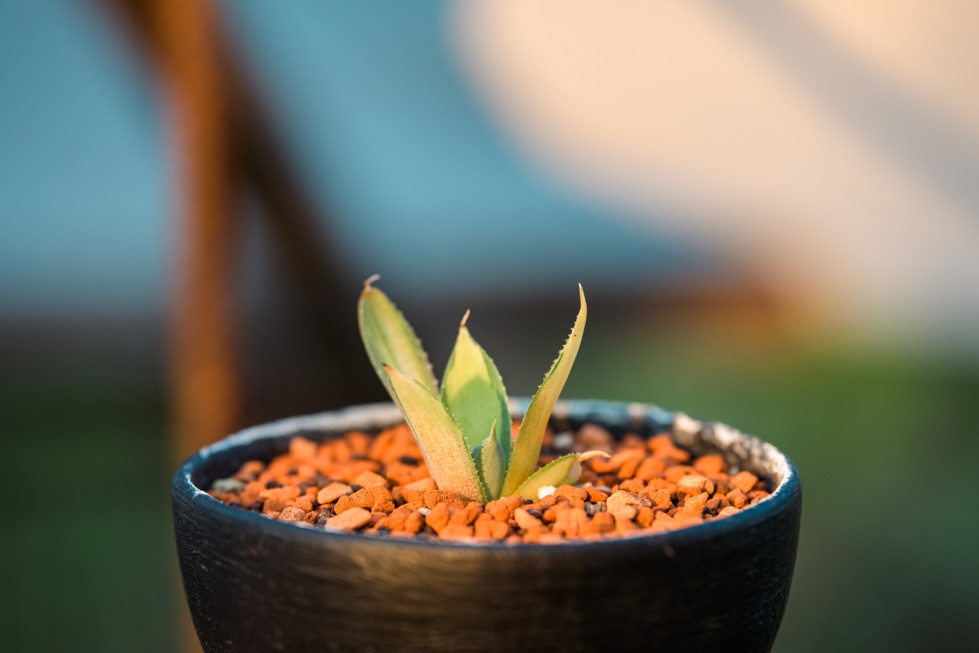
Agave plants can be purchased and planted in containers indoors at any time of the year, or outdoors in your garden from late spring/early summer as soon as the weather has reliably warmed and all risk of frost has long passed.
Make sure that water cannot sit around the base of the plants, as it will cause rotting, and that any water can always drain away freely.
Planting Agave succulents at an angle can help make sure that water can drain away freely.
This is most important when Agave is grown outdoors where there is natural rainfall, as you will not always have control over watering.
It can also be a good idea to place rocks or gravel around the base of the plants after planting, as this will further aid in combatting any drainage issues.
Companion Planting

In a warm, sunny and sheltered garden, which can be kept suitably dry and free-draining in winter, Agave can be grown alongside a number of other hardy succulents.
For example, in a dry garden scheme, you might grow Agaves with other large arid climate plants such as Dasylirion, Nolina and Yucca.
Agave in a container can be a great addition to a succulent collection which contains a wide variety of other succulents, bromeliads and cacti which are commonly grown as houseplants in the UK.
Agave Care
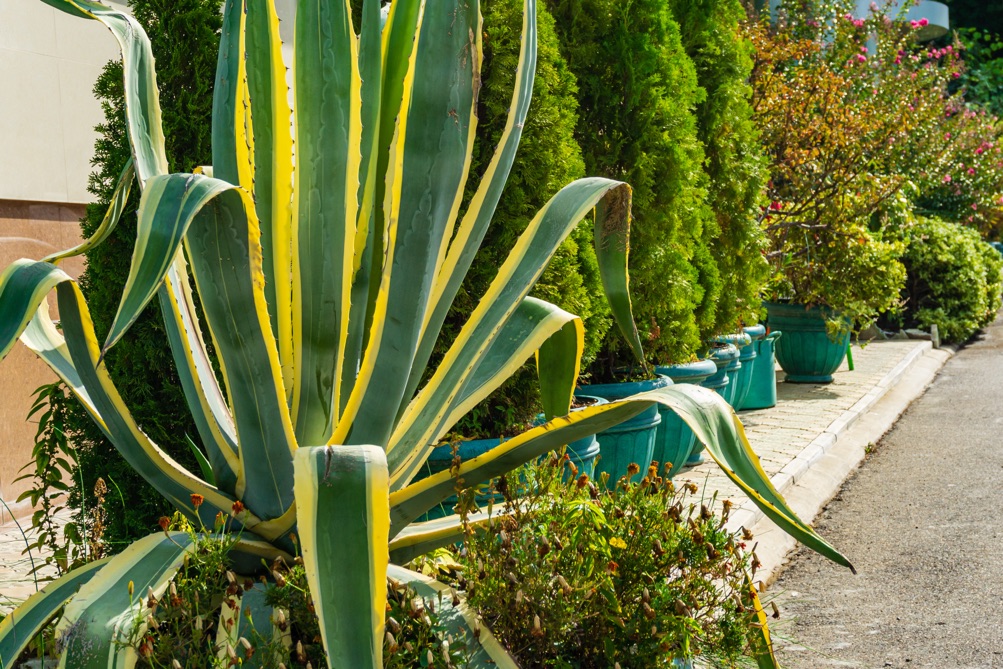
Agaves can be very low-maintenance plants where they are grown in suitable conditions.
However, special care will be required when it comes to the avoidance of over-watering, as this plant, like many other succulents, will not tolerate damp or waterlogged conditions for any length of time.
Watering
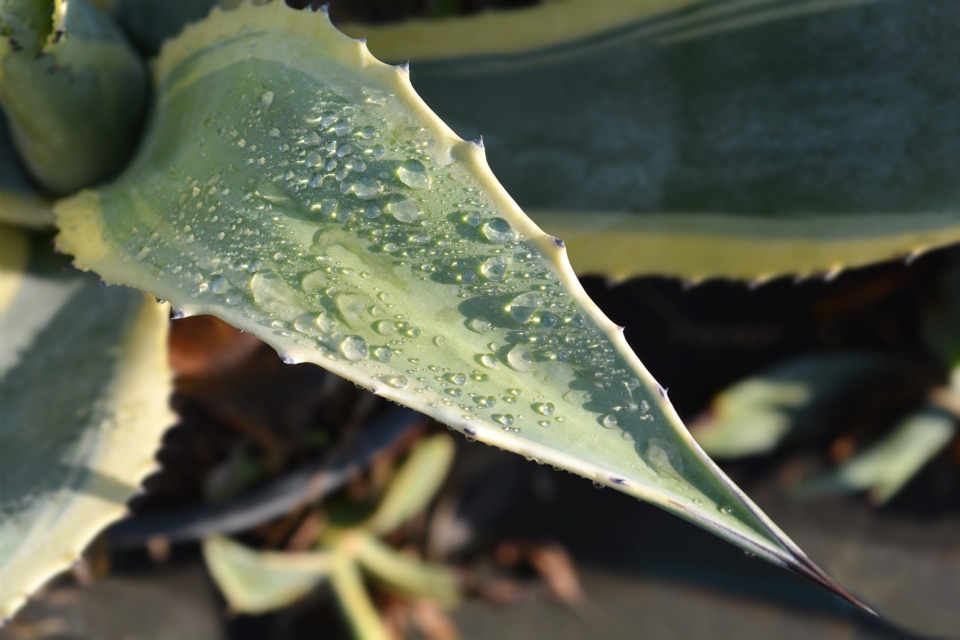
Agave should be watered moderately over the summer months, but in the winter watering should be very sparing indeed.
The plants will prefer to be kept almost entirely dry during the coldest months when they are not in active growth.
Feeding
Agaves in containers should be fed with a balanced, organic liquid plant feed every 2-3 weeks when they are in growth.
Pests & Problems
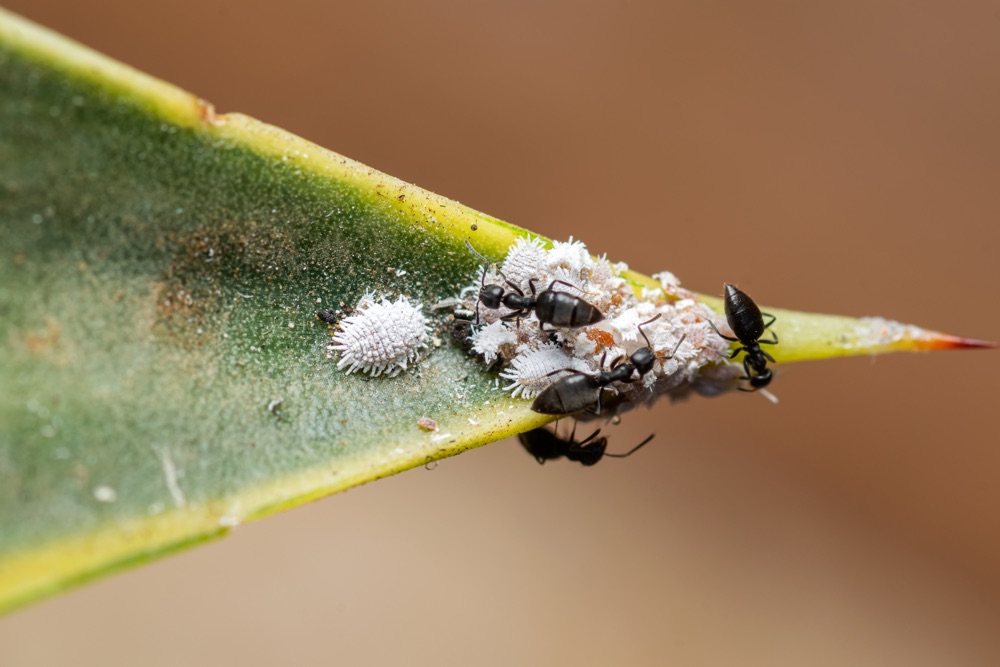
These succulents are usually trouble-free, though they can be attacked by pests such as scale insects, which excrete honeydew.
This sticky substance can foster the growth of sooty moulds.
Potting On

Agave should be potted when the plants become pot-bound into a larger container.
Make sure to take care whenever you are handling these sharp plants.
Propagation
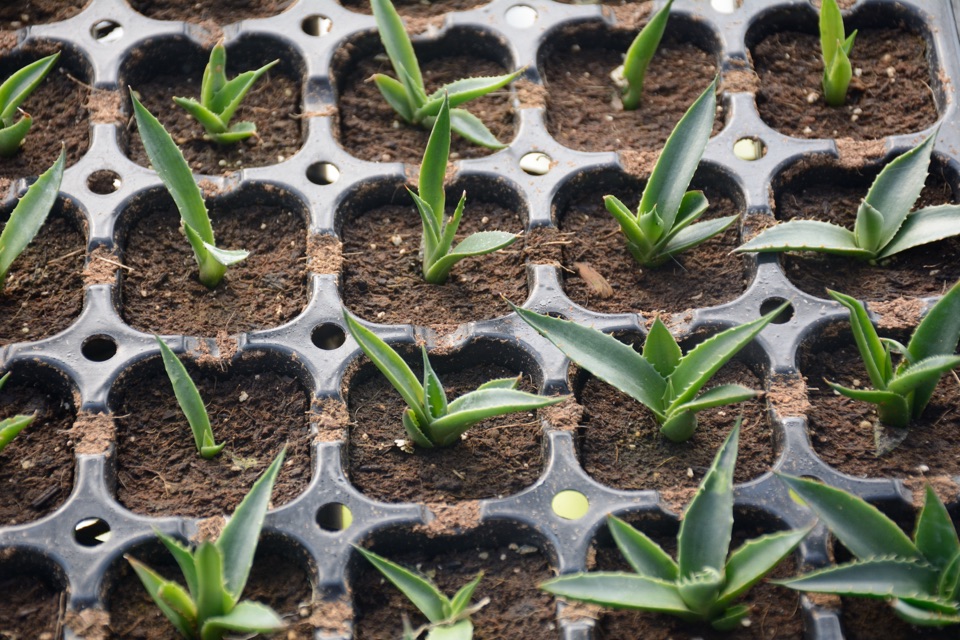
Agaves will often produce offsets, which can be potted up at any time when they arise, usually in spring or autumn.
If you place your Agave in a suitable location, and crucially, take care of watering and drainage, you should find them relatively easy and straightforward plants to grow.
References
- 1Schoellhorn, R., & Richardson, A. (n.d.). Warm Climate Production Guidelines For Agave. University of Florida. Retrieved March 9, 2023, from https://hort.ifas.ufl.edu/floriculture/pdfs/crop_production/Agave_ENHFL04-007.pdf
- 2MasterClass. (2021, March 4). How Is Tequila Made? The 6 Steps of Making Tequila. Retrieved March 9, 2023, from https://www.masterclass.com/articles/how-is-tequila-made
- 3Agave americana. (n.d.). Plants for a Future. Retrieved March 9, 2023, from https://pfaf.org/user/Plant.aspx?LatinName=Agave+americana
- 4Panchal, B. (2023, March 9). Why Agave Syrup is A Great Vegan Substitute For Honey. Holland & Barrett. Retrieved March 9, 2023, from https://www.hollandandbarrett.com/the-health-hub/food-drink/food/honey/agave-syrup-vegan-substitute-for-honey/
